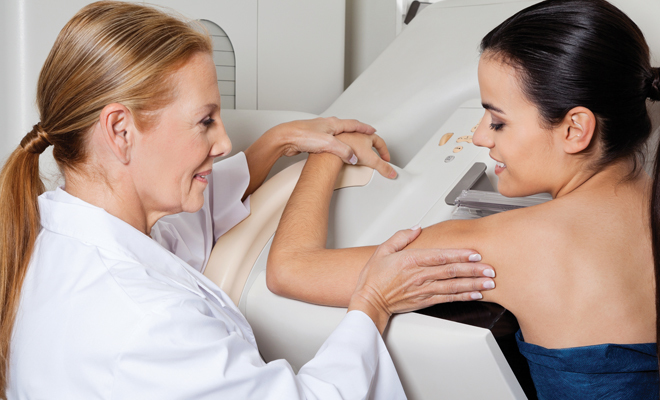
3D Mammography: Better Technology
Q. What is 3D digital mammography? Why is it more effective than a 2D mammogram?
A. 3D digital mammography is newer, advanced technology that is similar to conventional 2D mammography but better! A 3D mammogram takes several low-dose images through the breast tissue, providing exceptionally sharp images. This allows radiologists to have a closer look through the breast tissue, which significantly improves the detection of breast cancer. Additionally, there is no increased radiation dose compared to a conventional 2D mammogram. At Johnson County Imaging, we have had this advanced technology available for over 2 and a half years, longer than any other outpatient imaging center in the KC metro. 3D digital mammography has been shown to be significantly better than conventional 2D mammography in multiple scientific studies, increasing the detection of invasive cancer by 40 percent. Not only does 3D mammography do a better job of finding breast cancer, it also reduces the number of false positive studies by 15 percent.
Q. Are all 3D mammograms equal?
A. No! Only one 3D digital mammography manufacturer, Hologic, obtains 3D images in both the CC (top to bottom) view and the MLO (side to side) view. Other manufacturers only take the 3D images of the MLO view. Several scientific studies have shown that detection of breast cancer is greatly improved when the images are taken in both views. Another added benefit of Johnson County Imaging’s Hologic system is that the radiation dose is actually lower than the competitors by as much as 33 percent. JCI utilizes Hologic’s 3D plus C-view to get the best possible images for our patients. Before getting your 3D mammogram, be sure to ask if you’re getting the best possible exam with 3D images in both the CC and MLO views. ■
Andy L. Anderson, MD, is a board-certified radiologist at Johnson County Imaging with expertise in breast imaging and breast biopsies. Dr. Anderson completed a breast imaging and body imaging fellowship at Duke University. He works alongside several other radiologists who are experts in mammography and women’s imaging.










